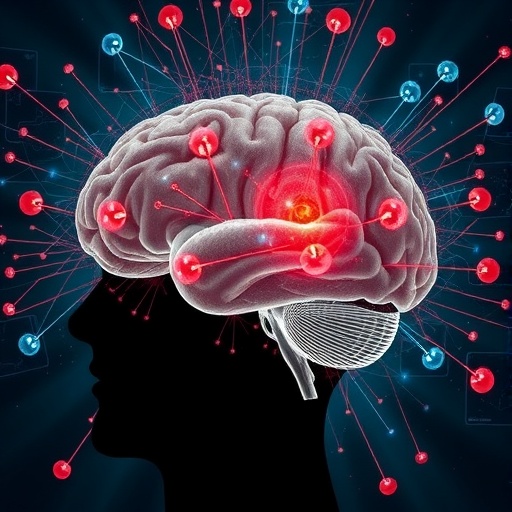In a pioneering synthesis of neuroscience research, scientists have unveiled fundamental brain mechanisms that predict the effectiveness of persuasive messages across a variety of social contexts. By conducting a comprehensive mega-analysis encompassing functional MRI data from 572 individuals, gleaned from 16 separate neuroimaging studies, the research team has illuminated how the human brain encodes and responds to messages designed to influence behavior, attitude, and preference. These findings not only enrich our theoretical understanding of human communication but also open promising avenues for crafting universally compelling messages in marketing, public health, and social campaigns.
At the heart of this research lies the identification of specific neural substrates consistently engaged during exposure to persuasive stimuli. The studies examined diverse realms of messaging, including public health advisories aimed at improving population well-being, crowdfunding appeals seeking financial support, movie trailers enticing viewers, and YouTube videos driving engagement. Despite the diversity of contexts and media forms, the team found striking commonalities in brain activity patterns that reliably forecast which messages resonate most strongly with audiences both inside and outside the lab.
Primarily, the research highlights two critical neural systems: reward-processing circuits and networks involved in social cognition, particularly mentalizing. Reward-related brain regions—those implicated in the anticipation, valuation, and receipt of rewarding outcomes—show robust activation when individuals encounter persuasive content predicted to be effective. These areas include, but are not limited to, the ventral striatum and orbitofrontal cortex, long associated with the processing of incentives and value-based decision-making. Engagement of these circuits suggests that messages perceived as intrinsically rewarding or promising beneficial outcomes are more likely to garner attention and motivate behavior change.
Equally notable is the activation of brain areas dedicated to understanding others’ mental states, a process termed mentalizing. Regions such as the temporoparietal junction and medial prefrontal cortex—which enable individuals to infer beliefs, intentions, and emotions of others—are consistently mobilized during encounters with persuasive messages that perform well outside of experimental settings. This insight aligns with the idea that persuasive messages succeed when they elicit social cognitive processing, effectively prompting recipients to consider the perspective or feelings of others, thereby fostering empathy or social alignment.
Importantly, neural responses observed in the study predict Message Effectiveness both at the individual level and across broad, non-neuroimaged audiences. This cross-validation underscores the external validity of the findings, suggesting that brain-based markers of reward anticipation and social cognition are not mere epiphenomena confined to lab conditions but rather capture fundamental psychological processes driving persuasion in real-world contexts. This is a significant advance over prior research, which often struggled to bridge neural responses and population-level behavioral outcomes.
Different from reward and mentalizing activations, the study reports that neural activity associated with emotional processing exhibits an intriguing pattern. Emotion-related brain responses—localized in regions like the amygdala and insula—help forecast message success in larger populations but do not reliably predict preferences within the scanned participant sample. This dissociation hints at a complex interplay between emotional arousal and individual differences in emotional processing, implying that emotional resonance might be a crucial driver of message virality at the societal scale rather than within controlled experimental cohorts.
The analytical approach deployed involved advanced meta-analytic techniques integrating data across heterogeneous experimental paradigms. By harmonizing neuroimaging results from varied tasks and stimuli, the mega-analysis transcends idiosyncratic features of individual studies and distills neural signatures of persuasive communication that generalize across contexts. This methodology represents a significant methodological contribution to cognitive neuroscience, emphasizing the power of big data integration for uncovering universal principles underlying human cognition and behavior.
Moreover, these findings challenge simplistic theories that reduce persuasion to purely emotional or cognitive mechanisms. Instead, the dual importance of reward anticipation and social cognition signals a multifaceted neural foundation whereby effective messages strategically engage both motivational systems—making a message personally valuable—and social interpretative faculties—facilitating perspective-taking and social influence. This dual engagement creates a potent synergy maximizing message impact.
The translational implications of this research are broad and compelling. Understanding that brain activity related to reward and mentalizing can serve as reliable biomarkers for message effectiveness paves the way for neuroscience-informed design of interventions. Public health officials could tailor campaigns that simultaneously appeal to intrinsic reward systems and promote social understanding, enhancing behavior change efficacy for issues like vaccination uptake or healthy lifestyle adoption. Similarly, marketers and content creators could leverage these insights to optimize audience engagement and persuasion ethically.
Additionally, the elucidation of universal neural indicators of persuasiveness invites reconsideration of how digital platforms and communication technologies curate and amplify content. Platforms that can harness neuroscience-informed metrics might better predict and promote constructive, prosocial messages that resonate widely while mitigating the viral spread of misinformation or manipulative content. This represents an exciting frontier where ethical neuroscience and technological innovation intersect.
From a theoretical perspective, the study enriches longstanding models of persuasion rooted in social psychology and communication theory by providing concrete neural substrates that underpin abstract psychological constructs. It bridges micro-level neural mechanisms with macro-level behavioral phenomena, fostering an integrative framework that can guide future interdisciplinary research in neuroscience, psychology, marketing, and communication studies.
Lastly, this research exemplifies the power of collaborative, large-scale scientific endeavors. By pooling data across labs, stimuli, and populations, the authors demonstrate that complex human phenomena such as persuasion can be dissected with remarkable precision using neuroimaging. Such mega-analytic frameworks promise to accelerate knowledge discovery and enhance reproducibility, key tenets in the quest to unravel the biological basis of human social behavior.
As the scientific community continues to refine these insights, the potential to harness brain-based predictors to inform message design could revolutionize domains from health promotion to political communication. The findings suggest a future where tailored, neuroscience-grounded messages not only sway opinions more effectively but also do so in ways that respect the cognitive and emotional complexity of human audiences, fostering communication that is both powerful and responsible.
Subject of Research: Neuroimaging and neural mechanisms underlying persuasive message effectiveness
Article Title: Brain activity explains message effectiveness: A mega-analysis of 16 neuroimaging studies
News Publication Date: 4-Nov-2025
Keywords: Neuroimaging




